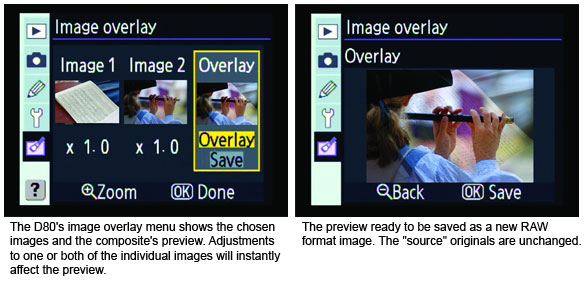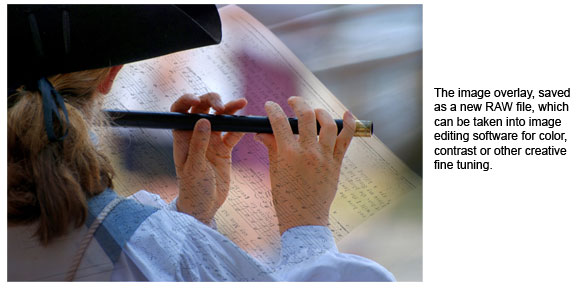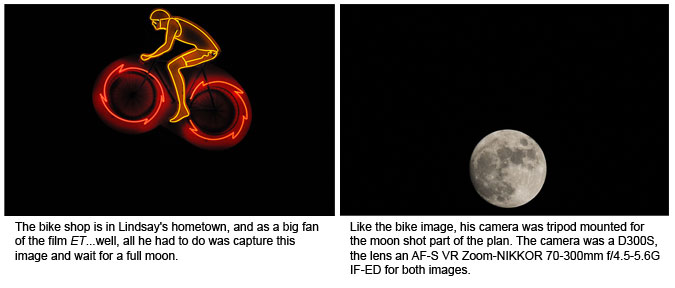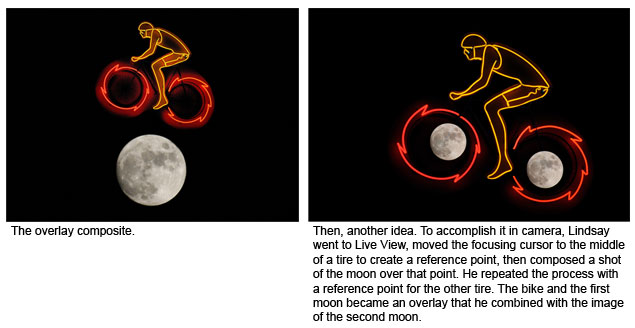Image Overlay: Combining Images Together In-Camera
One image? Two Images? Three images? The possibilities are endless.
In the thrilling days of yesteryear...that is, before digital...a special effect like multiple exposure was truly special—as in special effort, special knowledge and, often, a special amount of time devoted to it. Nothing wrong with that—it was part of the craft and the creativity of photography—and when done well it was a special achievement.
In these days of digital, special effects are often achieved when advanced technology responds to imagination.
We were thinking about this because of a conversation we had with Nikon senior product manager Lindsay Silverman about image overlay, a special effect feature available on many Nikon D-SLR cameras. Check your camera's manual to see if your specific model offers the feature.
"Image overlay came about from the concept of multiple exposure," Lindsay says, "and it borrows from multiple exposure the end-result: two or more images combined to form a new one. But because of the benefits of digital technology, the combining can be done after the fact, and the exposure values of each image involved can be adjusted long after the photos have been taken."
Multiple exposure used to mean the build up of two or more exposures on a frame of film, and it involved a lot of calculation to figure out the exposure compensation needed to prevent the result from looking like...well, like mud. You'd also have to release the camera's clutch mechanism so the shutter could be cocked without the film advancing. Today, with select Nikon D-SLRs, multiple exposures are a lot more precise because once you select the number of exposures you're going to make, the camera automatically adjusts the density of each one.
But image overlay is a little different—and, some might say, a lot more elegant.
"You're choosing the photos you want to combine," Lindsay says, "and they can be pictures taken minutes, hours, days or weeks apart, with different lenses, with flash and without—anything goes as long as the photos are on the same memory card and you've taken the pictures in RAW format."
For instance, Lindsay's historical musical image. "I took it about four years ago while on vacation with my family in Williamsburg, Virginia. I was shooting with the D80, walking around, looking for ideas to present a familiar subject in a different way. When I saw the flautist and, nearby, some sheet music on a table, I thought an image overlay would work pretty well. I took her picture sort of looking over her shoulder, as if I were marching behind her in one of those historical paintings. Then, maybe 30, 40, 50 shots later, I took a fairly close-up view of the sheet music in several different compositions. On the bus back to the hotel I was reviewing the pictures on the LCD and right there called up the image overlay function and made the composite."
And there's really not much more to it. Choose image overlay and the camera prompts you to select a photo, and because it's in RAW format, you're free to play with its exposure—making it lighter or darker as a result—without affecting the original. Select your second photo, adjust it and then combine the two images. You'll be previewing the end result, so you can further adjust either or both of the images and see the density changes as you make them. When you get what you like, save it as a new RAW photo. The originals are unchanged and the composite can be taken into editing software, like Capture NX 2, for further adjustment.
"Sometimes I work like I did that day," Lindsay says, "with the idea of an image overlay in mind. Other times I'll be reviewing photos I've taken and see possibilities. Either way, it's a lot of creative fun. I can see where people could create holiday cards, family calendars, images to send with email, you name it.
"It's pretty cool, the power of digital."










